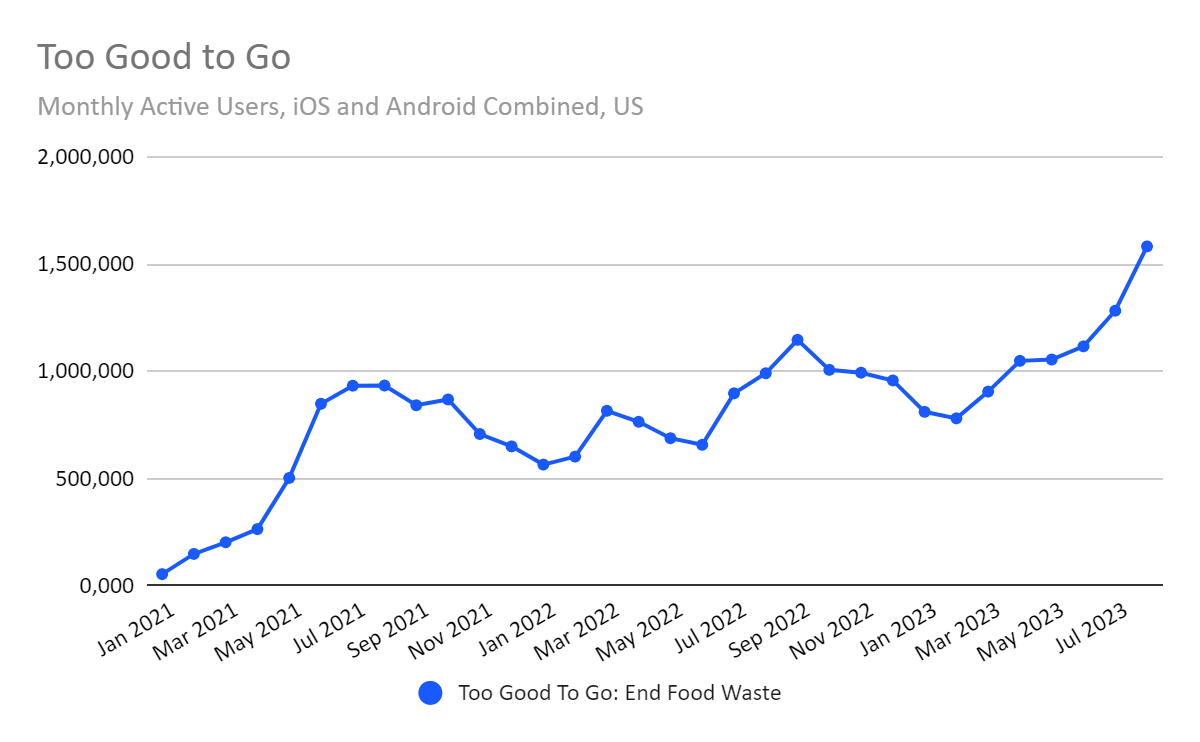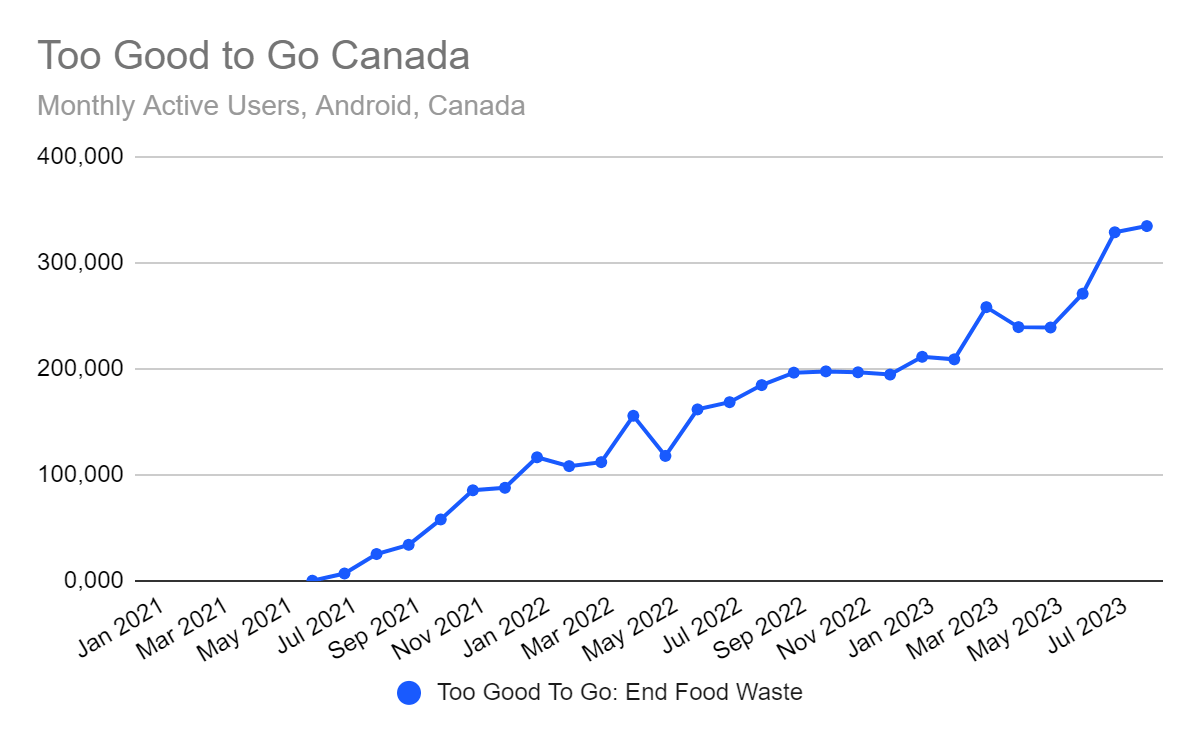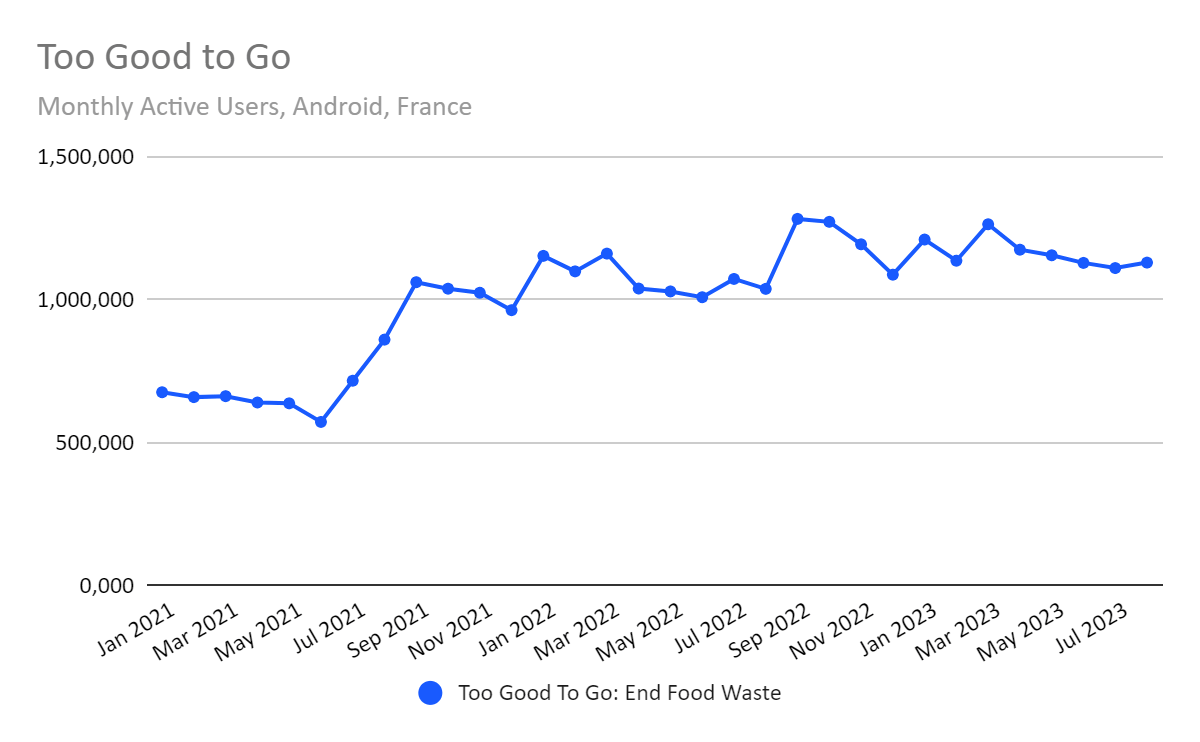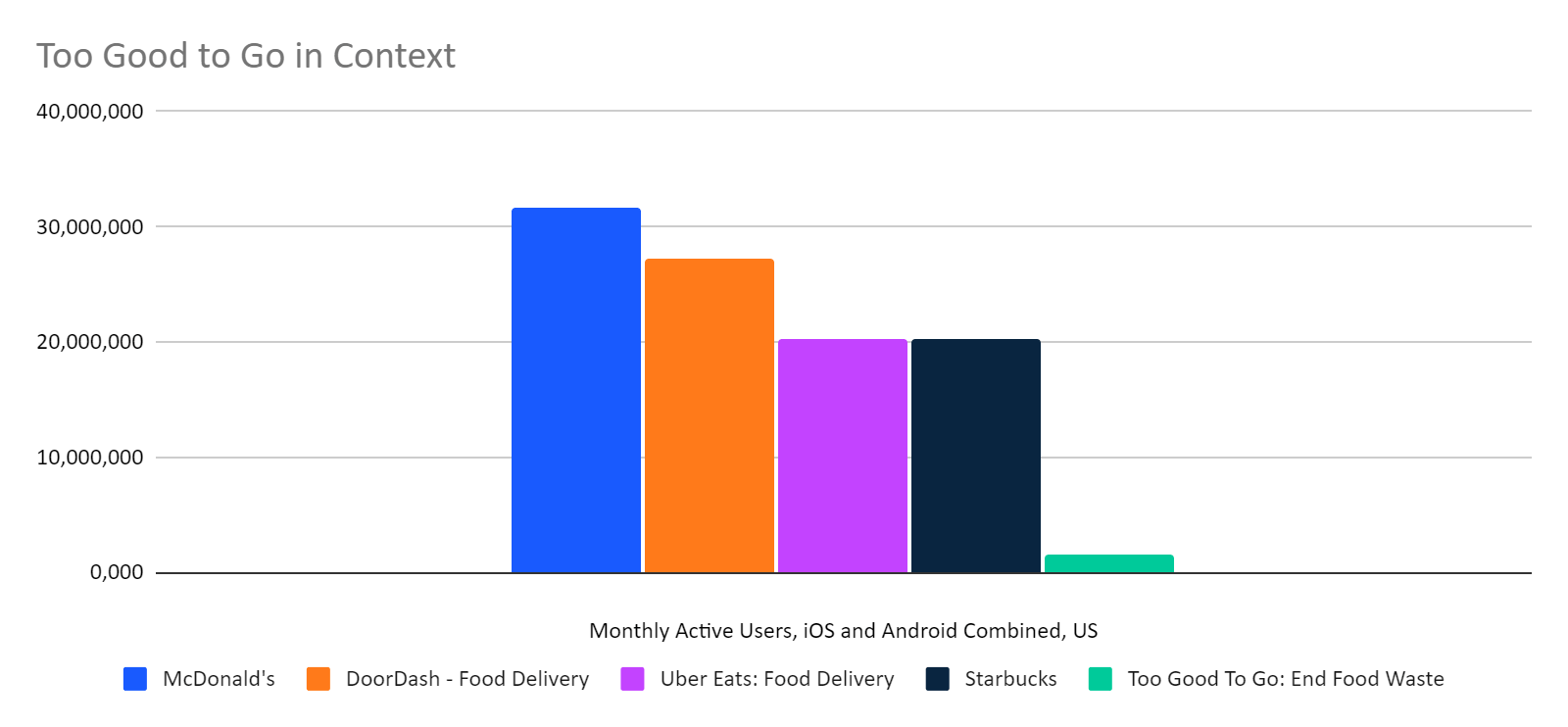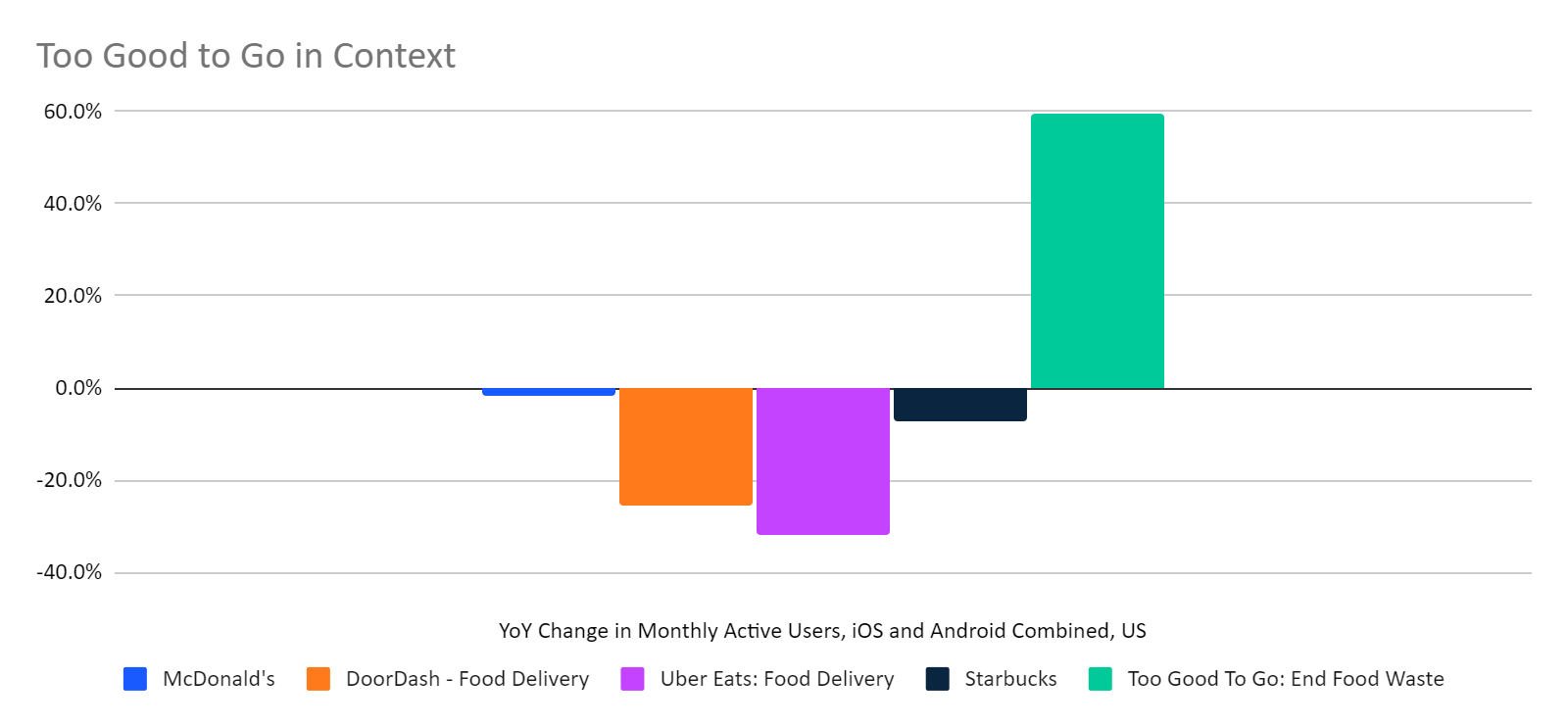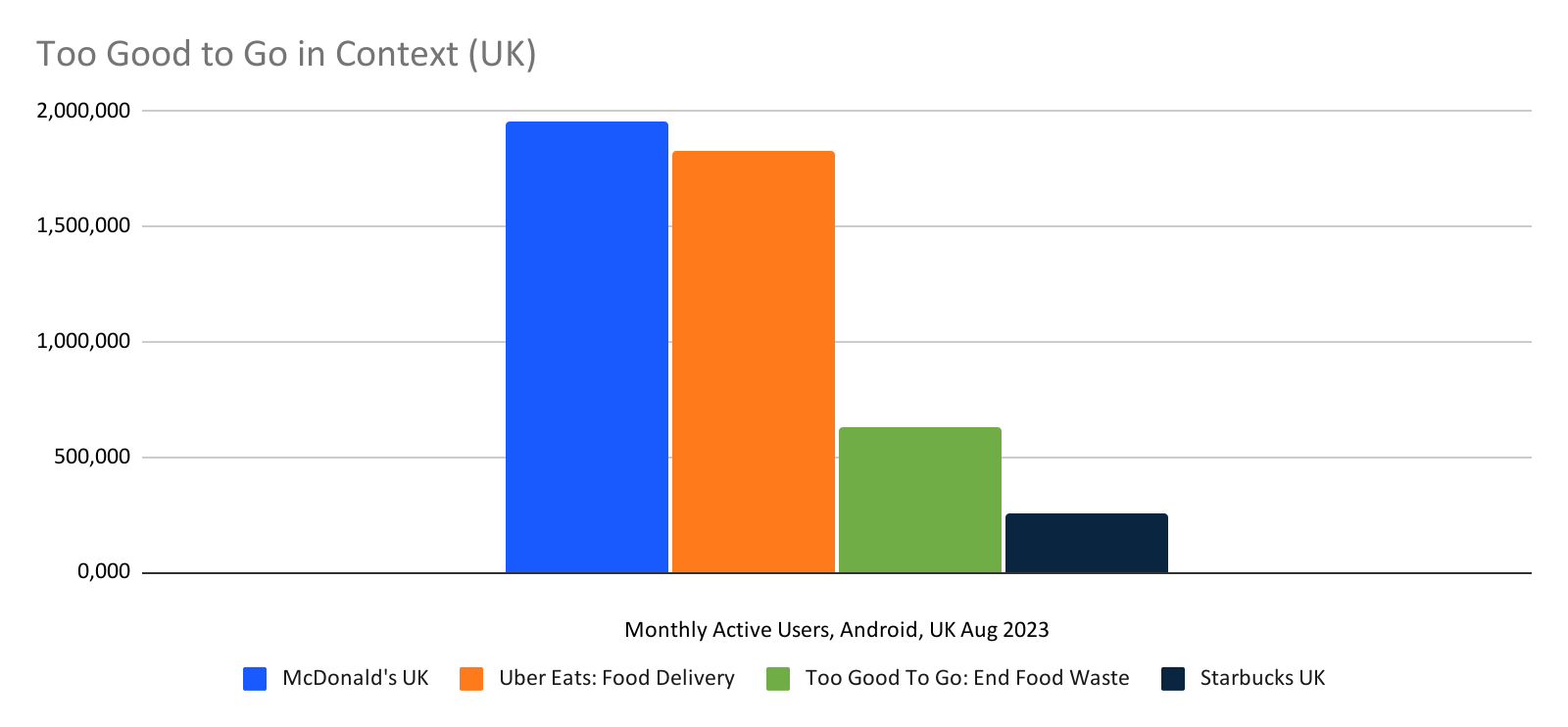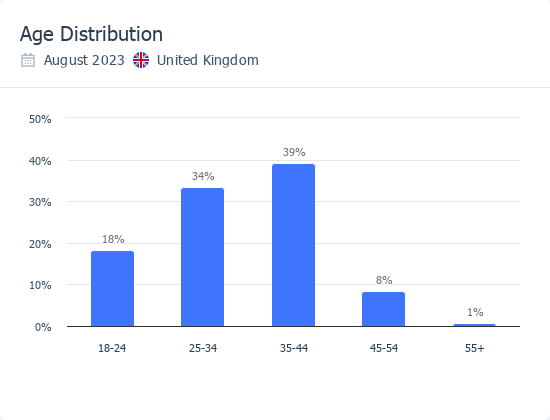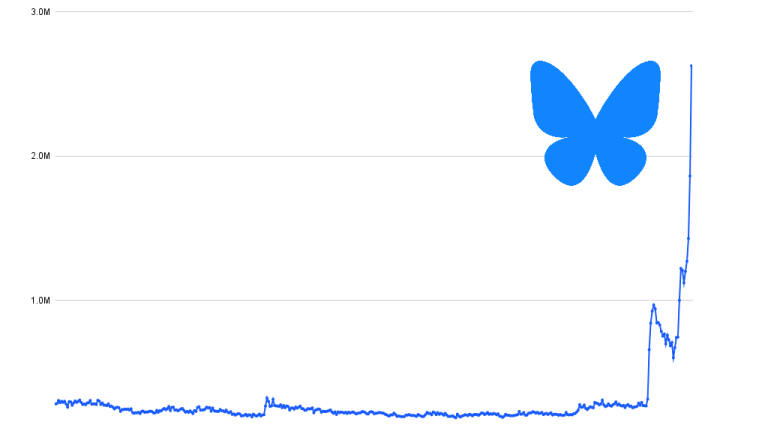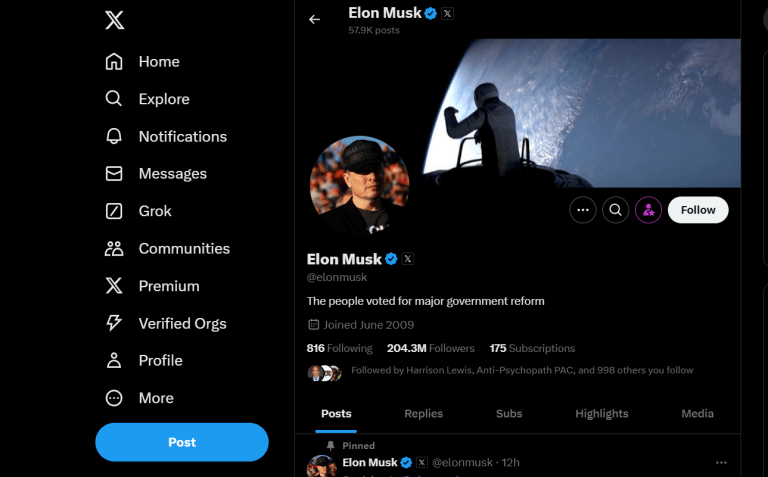Too Good to Go Grew Nearly 60% This Year in US, Fighting Food Waste and Saving Money for Consumers
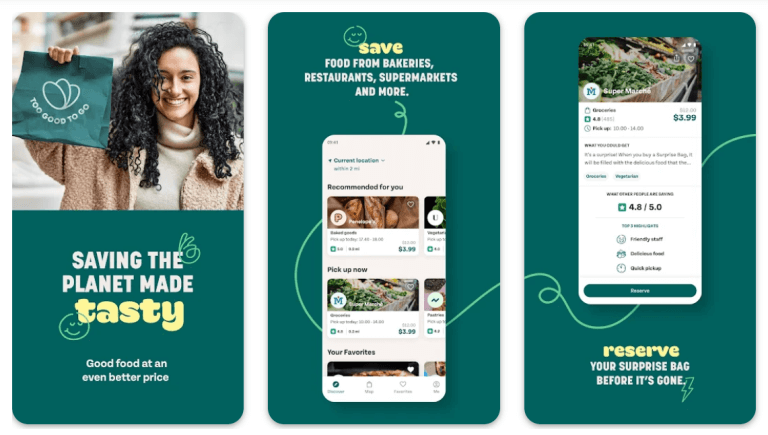
Young people lead adoption in the US, while the app is popular with all ages in the UK and Europe
One of the fastest growing Food & Drink apps in the US is Too Good to Go, winning fans with its promise of helping the environment and reducing food waste while saving users money.
Key takeaways
- In August, Too Good to Go had 1.6 million monthly active users in the US for iOS and Android combined, up 59.8% from the same time last year.
- Worldwide, Too Good to Go had 7.3 million monthly active users on Android alone in August, a 7.3% year-over-year increase.
- In Canada, where Too Good to Go just signed Tim Hortons chain as a partner, the app had nearly 335,000 monthly active users on Android, up 81% year-over-year.
- In the US, younger users have been particularly enthusiastic adopters. Nearly 75% of Too Good to Go users in the US are under age 34, according to Similarweb estimates for Android. The age distribution of users is more evenly mixed in other countries where Too Good to Go is more established.
The idea is to rescue food items from restaurants, bakeries, and grocery stores that are too good to go to the landfill — even though standard practice might be to throw them out at the end of the day. This includes goods that are perfectly good to eat but past a business’s promise of freshness, like bagels baked fresh in the morning but unsold over the course of the day. About a third of the food produced in the US ultimately goes to waste, according to Too Good to Go.
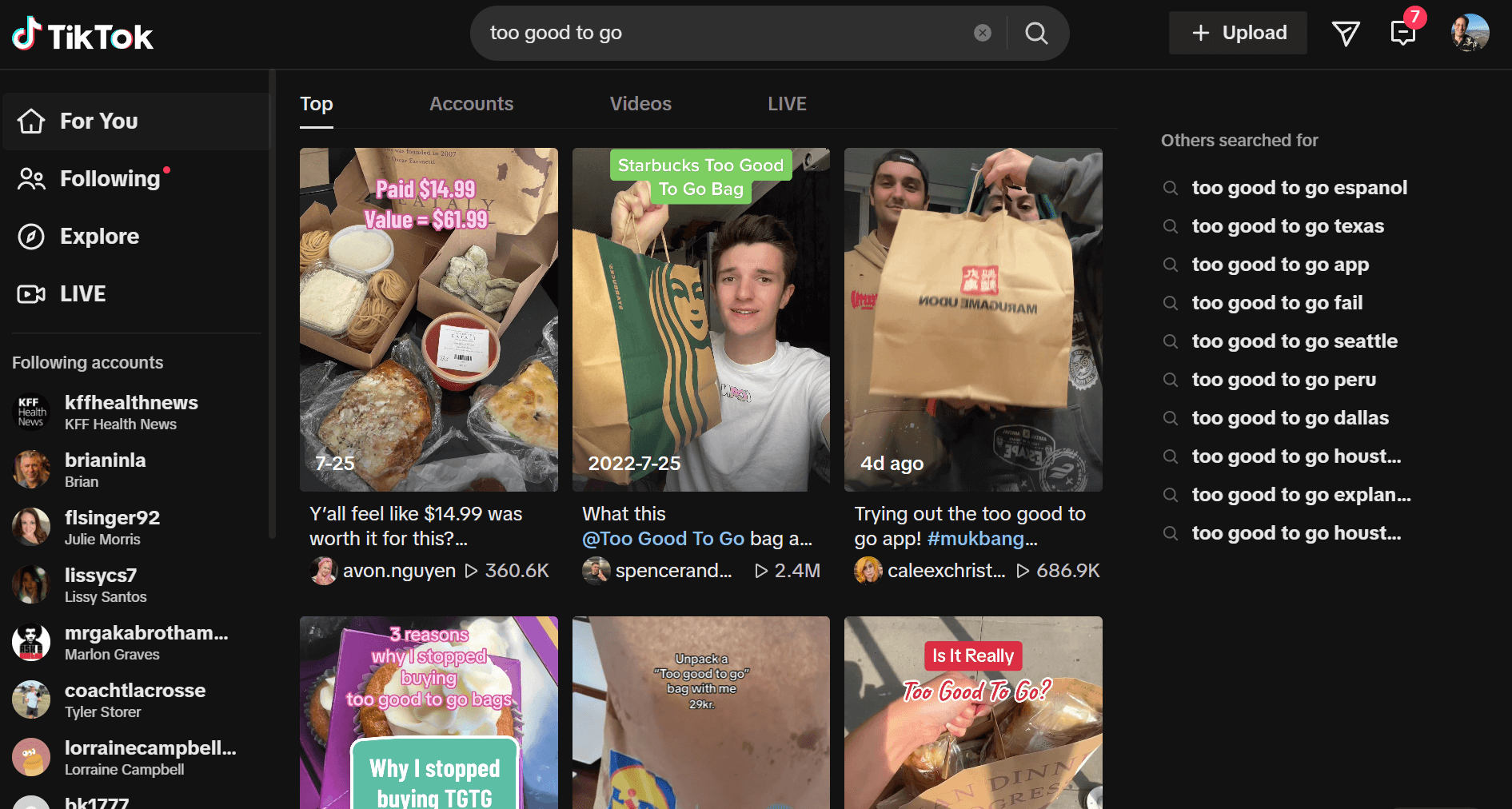
Too Good to Go “surprise bag” openings on TikTok
While joining in Too Good to Go’s positive social mission is part of the appeal, so is the thrill of getting a good deal. Typically, users sign up to get a “surprise bag” of food at about half its normal cost. One of the ways the app’s popularity has been spreading is via “opening up the bab” videos on TikTok and other platforms, which are sort of like consumer electronics “unboxing” videos revealing the goodies inside.
The app has also benefited from positive news coverage, such as a recent NPR feature.
Growing worldwide but particularly fast in the US
Too Good to Go use was on the rise in all of the markets we looked at but particularly in the US, where it is being actively embraced by many city governments and businesses in those cities wanting to prevent waste, help the environment, and feed their people.
The use of the app is also rising rapidly in Canada.
In France, one of the markets where Too Good to Go is already well-established, the app continues to grow but the percentage increase is not as dramatic. The app had more than 1.1 million monthly active users in France on Android alone in August, a year-over-year increase of 8.9%.
One of the fastest-growing Food & Drink apps in the US
Apps offering convenient access to food, whether from grocers or restaurants, are some of the most popular in the mobile economy. While Too Good to Go has some distance to go if it wants to match the Food & Drink category’s most popular apps in the US, it’s definitely on the map.
Meanwhile, it was one of the category’s fastest-growing apps in August, while some better-known apps were down on a year-over-year basis.
In the UK, where it is more established, Too Good to Go has more monthly active users than the Starbucks app, judging by Similarweb estimates for Android (the mobile platform for which we have the best data outside of the US).
Young people are leading Too Good to Go’s rise in the US
In the US, Too Good to Go is particularly popular with younger people – as in those in their college or early working years. Nearly 75% of the users of the app are under the age of 34, with 28% in the 18 to 24 and 45% in the 25 to 34 year-old-age brackets, according to Similarweb estimates for Android
Worldwide the age distribution is more balanced.
In the United Kingdom and France, where Too Good to Go is more established, the greatest number of users fall into the 35 to 44 age bracket, perhaps reflecting the need to economize in the face of cost of living challenges.
In the UK, 39% of Too Good to Go users fall into that middle-aged category.
In France, it’s even higher, at 41%.
Save money while doing good is a powerful message
By emphasizing ecology and economizing in equal measure, Too Good to Go is expanding its consumer user base while winning over businesses that can make incremental income from food that would otherwise be thrown away.
The Similarweb Insights & Communications team is available to pull additional or updated data on request for the news media (journalists are invited to write to press@similarweb.com). When citing our data, please reference Similarweb as the source and link back to the most relevant blog post or similarweb.com/blog/insights/.
Disclaimer: All names, brands, trademarks, and registered trademarks are the property of their respective owners. The data, reports, and other materials provided or made available by Similarweb consist of or include estimated metrics and digital insights generated by Similarweb using its proprietary algorithms, based on information collected by Similarweb from multiple sources using its advanced data methodologies. Similarweb shall not be responsible for the accuracy of such data, reports, and materials and shall have no liability for any decision by any third party based in whole or in part on such data, reports, and materials.
Wondering what Similarweb can do for your business?
Give it a try or talk to our insights team — don’t worry, it’s free!
